Cardoons, woodlice, Caramac and Apios americana
Abundance: Tuesday 30 April 2024
A blackbird is sat on the chimney, singing its little heart out. Unbeknownst to it, the pot right by its feathery arse funnels its song, magnified by the chimney’s lining, to be broadcast live and loud in the kitchen three floors below where I am stirring a white sauce for tonight’s supper.
After a day of actual sunshine, what seemed impossible just an hour ago: the wind turned and the rain lashes down. That blackbird isn’t bothered one bit. It’s been singing like this two or three times a day. Only once have I not stopped to listen: this morning, when carrying egg boxes of potatoes from the sunny window sill - where they’ve been chitting - to their new home in the garden.
I don’t believe anyone has ever paid more attention to anything than me carrying those egg boxes, each carefully labelled with the varieties of potato within: spill them now and I’d lose any idea of what they are, when they mature, and how best we might enjoy them.
It’s later than I normal plant them, but the soil and the weather are the boss: it’s been too wet and too cold.
I thought I was only planting; it turns out I was harvesting too. In exactly the spot I planned to sow potatoes, my copper trowel found - if not exactly gold - burnished caramac1. A couple of metres away, the neighbouring bed was home last year to Apios americana. I say ‘was’: I left them to overwinter, that they might multiply over summer, giving me plenty to eat and more to plant next year.
So friable is the compost in this raised bed - one I built 18 months ago from a storm-fallen Monterey Cypress just a few postcodes away - that the Apios’ roots could push through it as easily as fingers into a bath of feathers.
Under the surface, strings of oval tubers, 5cm or so in diameter, grew: they have a nutty flavour somewhere between Jerusalem artichokes and sweet potatoes. I love them. You can harvest whenever you like from late summer, but if you wait until the cricket season is over and the football well underway, the plant will be preparing for - or even into - dormancy, and be less disturbed by an inquisitive hand.
I’ve no idea2 why so few grow Apios. Perennial (buy them once and you have them for life), delicious, unavailable to buy in the shops, beautiful, largely untroubled by pests; instead, we grow what we can already buy. Of course, homegrown potatoes - earlies at least - are a different world to those in the shops, but we dedicate so much of our edible gardens to the most widely available, most disease-prone, cheaply available food, missing opportunities to widen our culinary and horticultural larder. It’s so easy to be a tribute band, playing songs we already know, when so much deliciousness - and the cultural connection that comes with - is out there to enjoy.
I’m not saying we shouldn’t grow the best of the familiar - here I am planting potatoes after all - but let’s make room for the lesser known too.
Apios grow beautifully. In midsummer, their winding tendrils cling to and scale long canes; they might make 2m or more. By the height of summer, flowers - the peculiar burgundy so common in the 80s3 and so absent since - dot its height, held at distance as if they think they’re too regal to be in the leaves’ company.
While that’s going on, strings of tubers form unseen, plumping up late in the growing year once they’ve reached their available wingspan.
The tubers that encroached into my intended potato patch will be replanted elsewhere, or perhaps washed, sliced and fried in olive oil to go with tomorrow’s match.
As luck would have it, Apios is nitrogen fixer, taking nitrogen out of the air and making it available to the soil via its roots, enriching the bed as it grows. The hungry, developing potato plants will happily mop up the extra nutrients and grow more enthusiastically as a result.
Funny to think that these Apios tubers will, in effect, feed us twice.
Cardoon gratin
And then the sun lost its focus, the clouds fell in and the radiators clanked and creaked into action. Never mind the asparagus supper I’d been dreaming of this morning, it’s an evening for heartiness.
I promise I don’t live off gratins - this is the third (and last, I promise4) and cheesiest I’m sharing - but when the days bring sun and the evenings shudder, I so often want creamy vegetables and something succulent and squeaky to go with. This is a very different sort of gratin to the others, and perfect for when winter is changing places with another season.
It is, by some distance, the best way I know with cardoons. If you grow - or have seen - a globe artichoke plant with somewhat small and disappointingly-sized artichokes, chances are it’s a cardoon. They are virtually indistinguishable in every other way.
With cardoons, it is the offshoots or hearts you’re after. The stalks are celery-like in form, with a flavour between artichoke hearts and chicory. Wear gloves when preparing them: the tannins leave your hands like you’ve had a decade on the Woodbines.
To prepare cardoons, split each heart into ribbed stems like glaucous celery, top and tail, and thoroughly wash them. You may also need to escort a number of woodlice off the premises. Remove the leaves and use a sharp peeler to shave the ribs from each stem.
This recipe will happily turn to chicory, purple sprouting or radicchio, and if you use cauliflower it makes for a superb cauliflower cheese.
Serves 4
3 x 20cm cardoon hearts, stems chopped into 7cm pieces
30g butter
30g plain flour
300ml milk
100ml double cream
15cm rosemary stem, leaves only, finely chopped
Nutmeg
Salt and pepper
100g grated gruyere
½-1 tsp chilli flakes
Preheat the oven to 200°C/180°C fan.
Bring a pan of salted water to the boil. Add the cardoons and simmer for 40-50 minutes until they readily take the point of a knife. Drain, keeping around 200ml of cooking liquid. Place the cardoons in the good sized dish: this Netherton Pan is around 26cm diameter.
In a small pan, melt the butter and whisk together with the flour over a moderate heat for a couple of minutes until it bubbles. Little by little, whisk in the milk until fully incorporated, then whisk in the cooking liquid and the cream. Cook for 5 minutes until smooth and thick, stirring often, ideally accompanied by blackbird song.
Add the rosemary, a generous scratching of nutmeg, and season well with salt and pepper.
Pour the sauce over the cardoons, scatter with cheese and cook in the oven until golden - about 20 minutes. Allow to rest for a few minutes before sprinkling with chilli flakes and serving with little gems sliced into wedges.
there is no other word for that particular golden beige than that of the chocolate bar, alas no longer made
is it that we are inherently safe when it comes to food, perhaps combined with nurseries preferring you to buy annuals rather than perennials, so you have to come back every year?
especially in Sta Press trousers of the early 80s Mod revival, and raspberry flavoured instant desserts such as Angel Delight
caveats apply


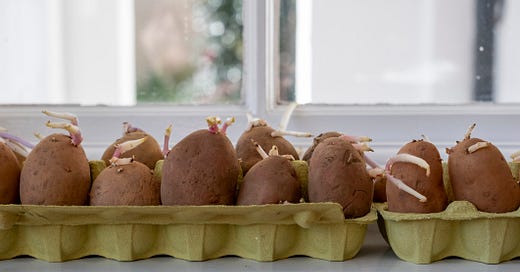




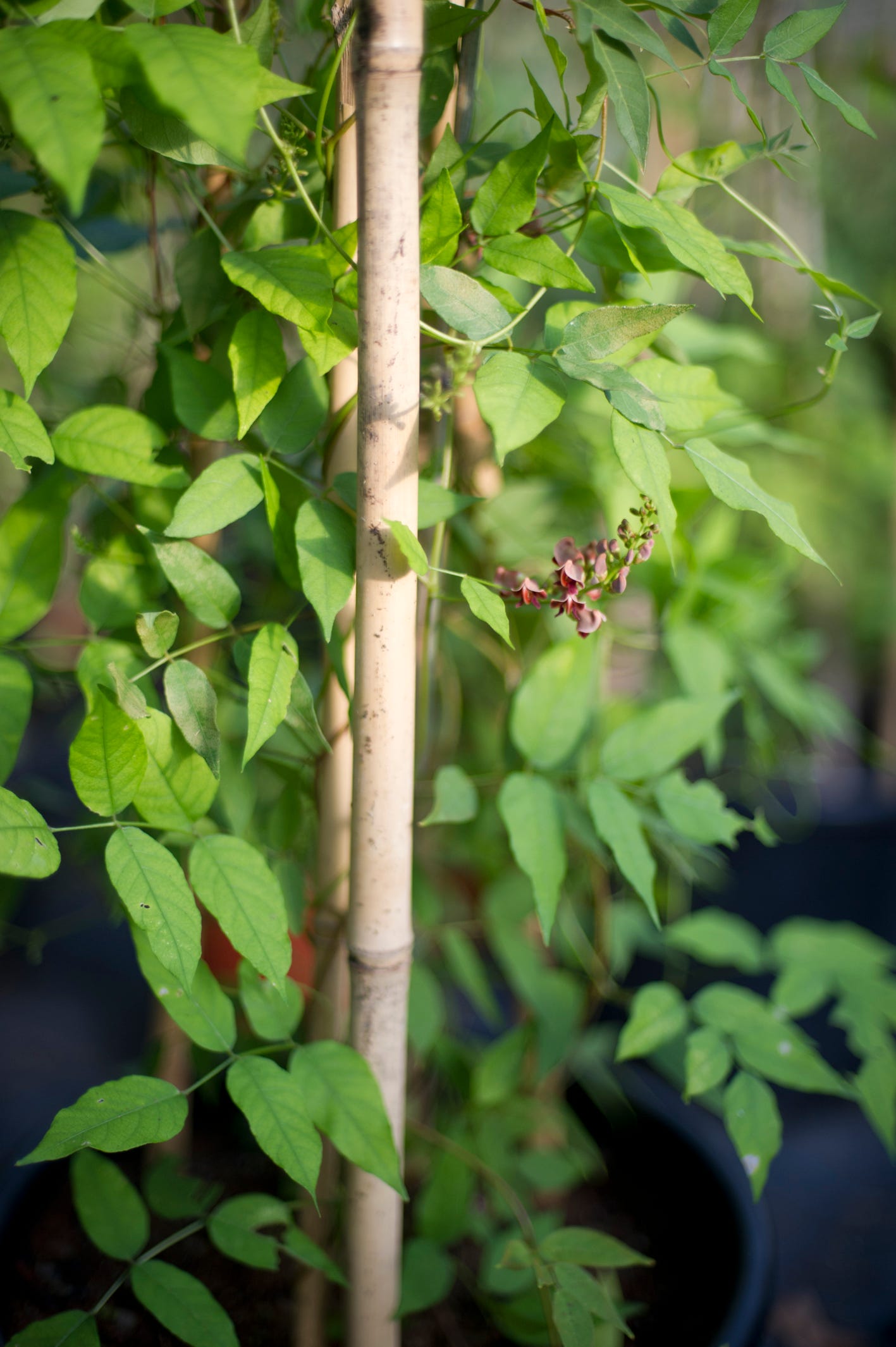
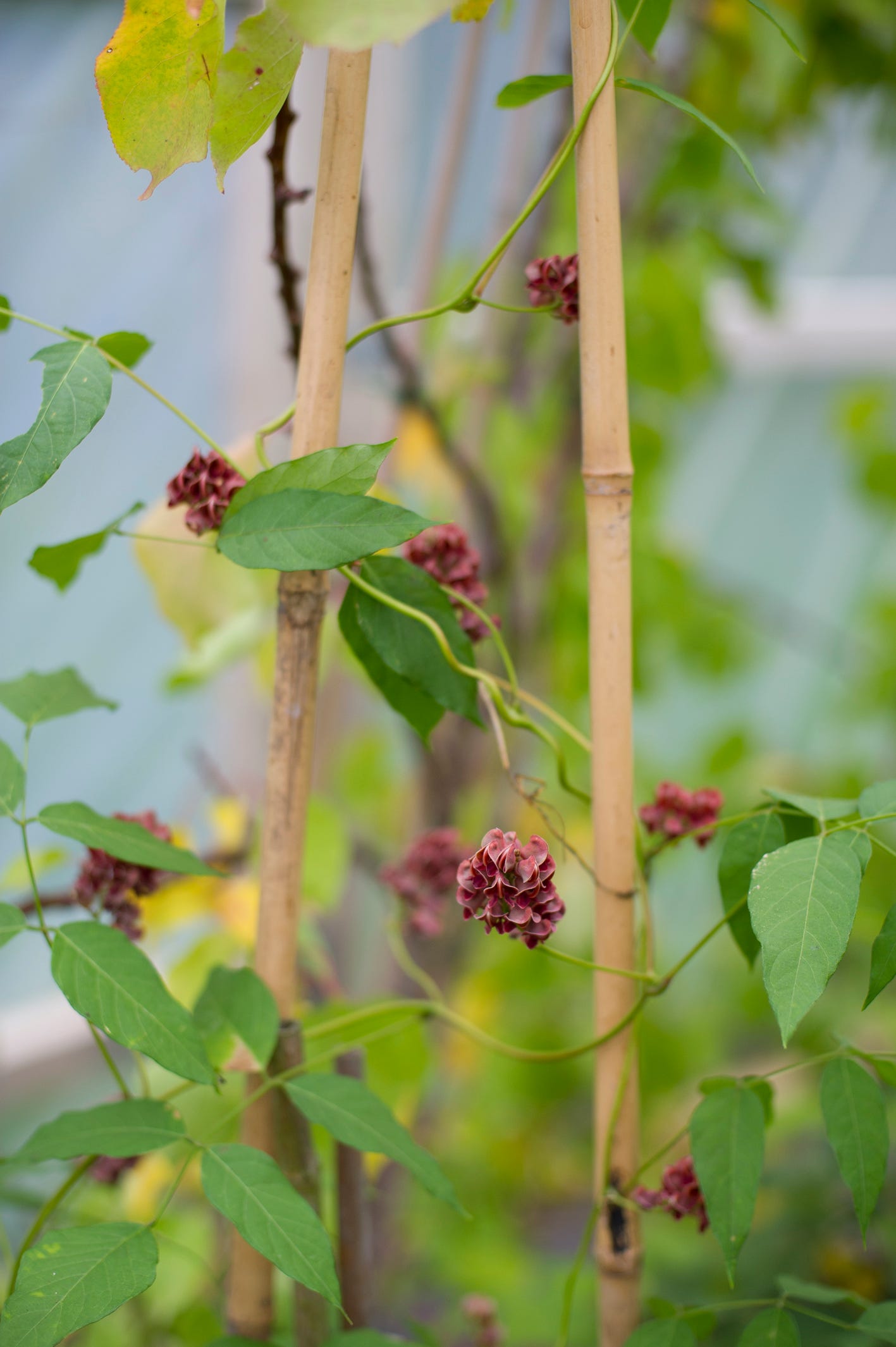
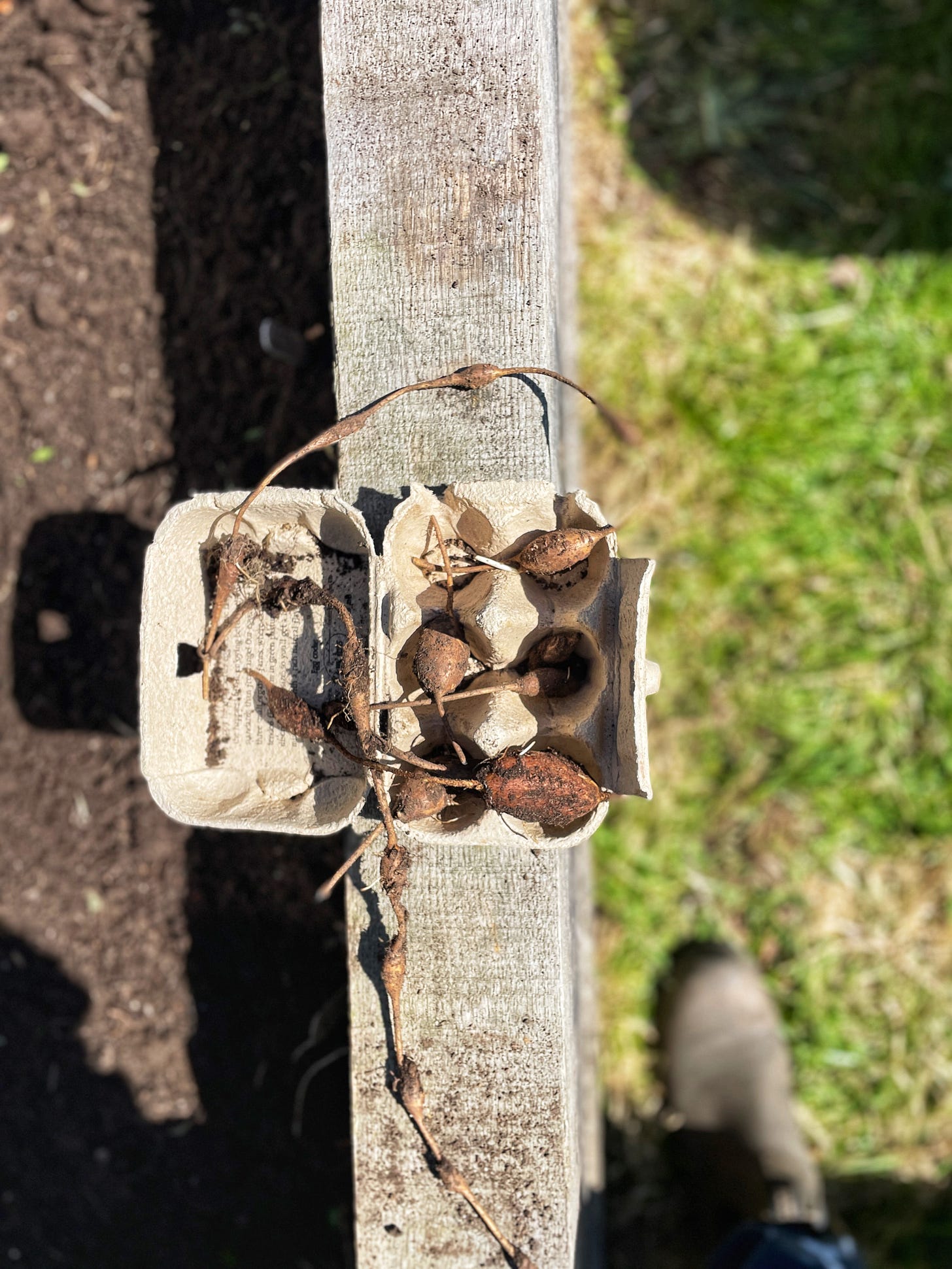
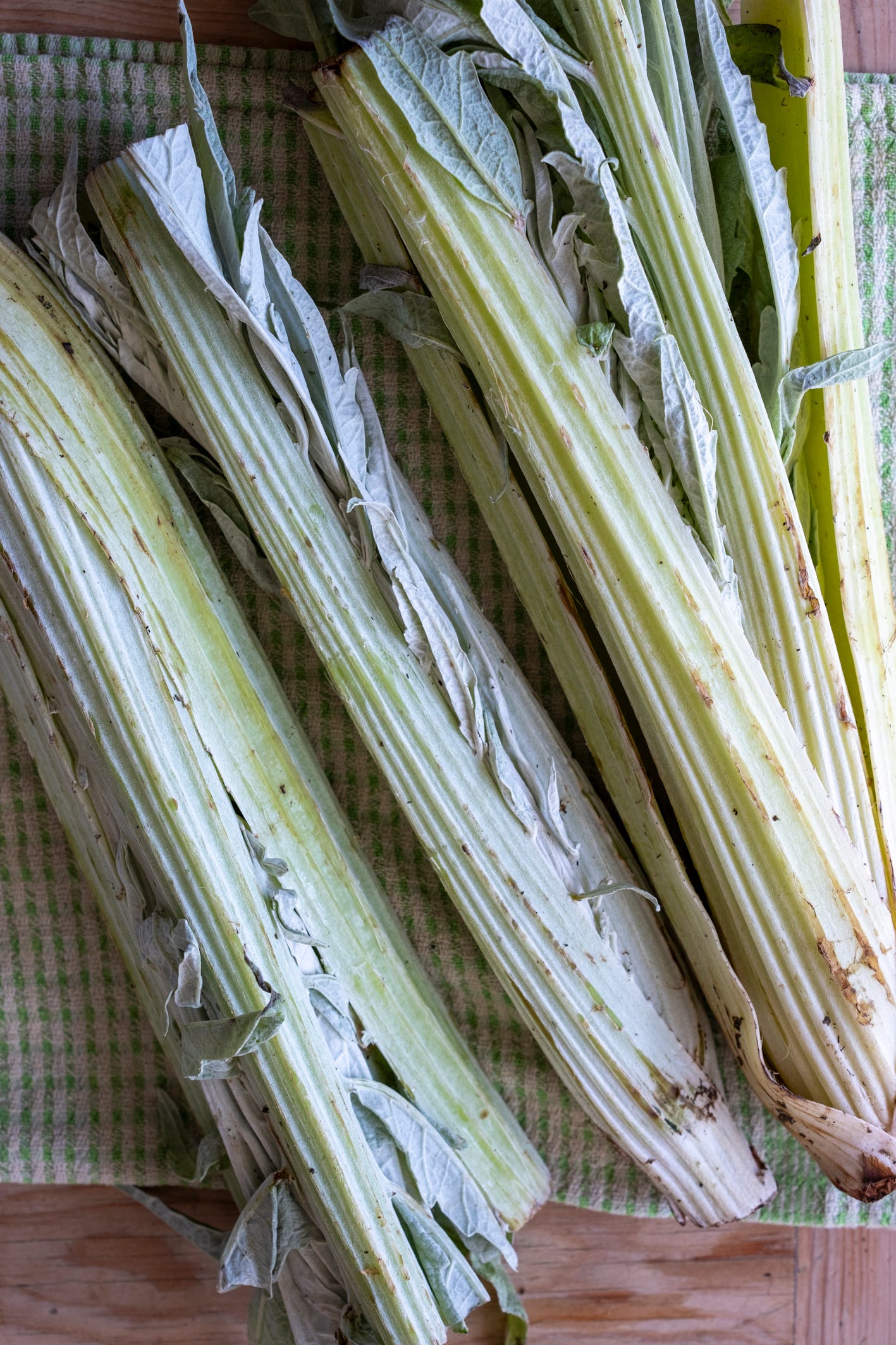
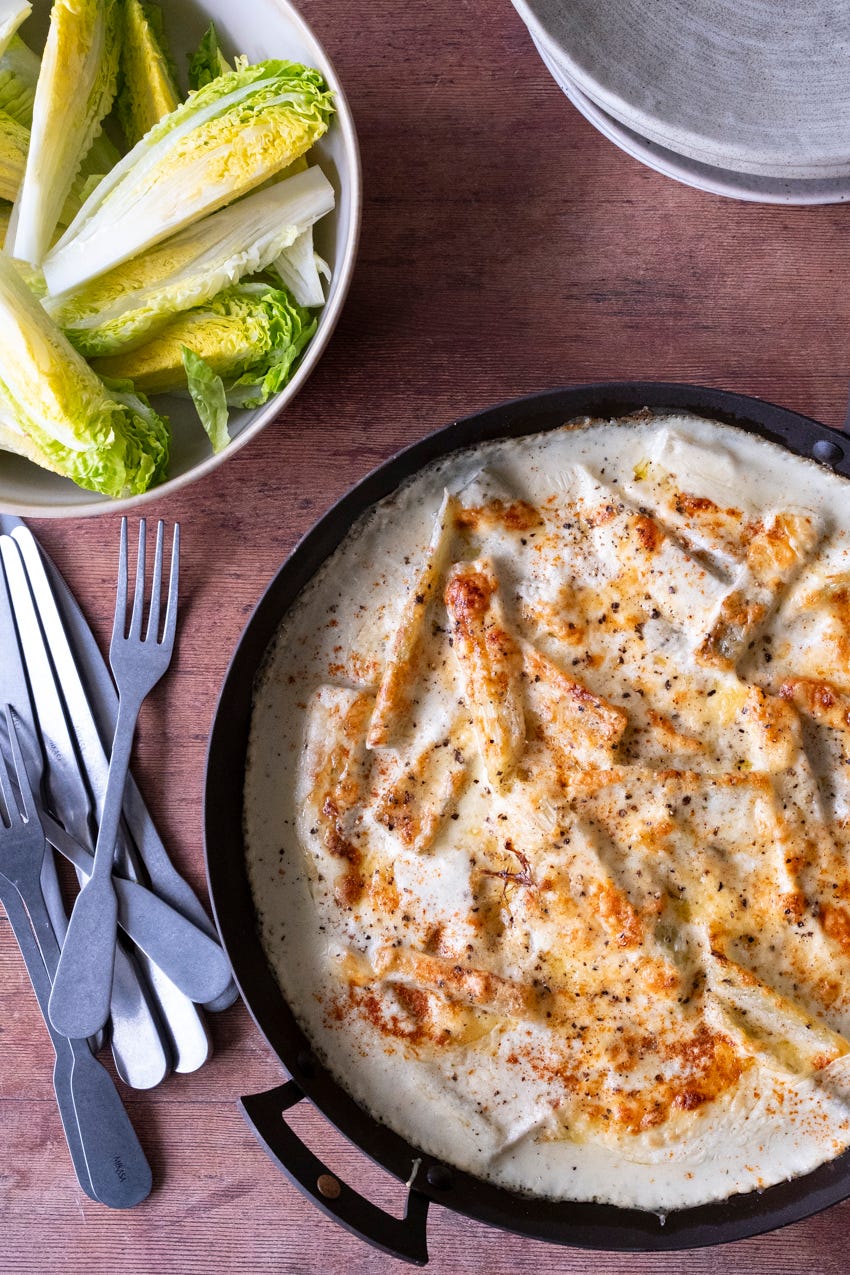
I liked it just for the title. I haven’t even read it yet.
Another lesson in the bag, 2 new veggies I learned about today. And the caramac reference takes me right back to my great grandma's treat tin where I was torn between a nougat bar, a sherbet fountain or a caramac. Decisions decisions